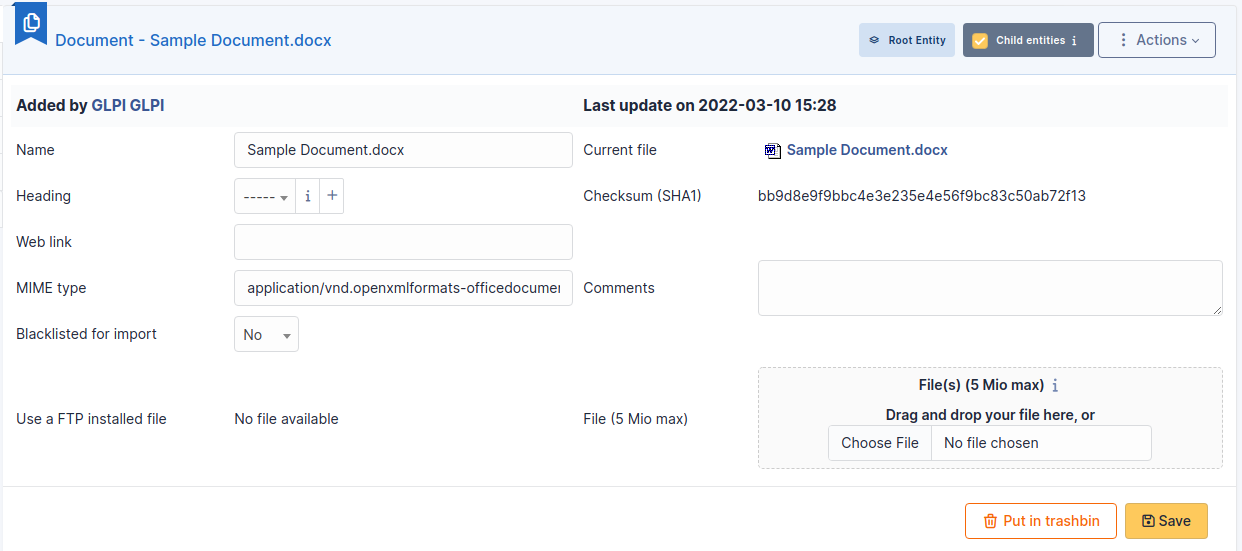Documents¶
Documents management in GLPI allows to store digital documents or web links sorted under different headings.
A document is described by a name and an comment and can be associated to a heading.
The file corresponding to the document can be added in several ways:
From local disk;
Using a web link pointing to a document (image, HTML page, PDF…);
Using a file previously transferred with FTP to sub-folder /files/_uploads/ of GLPI installation
A MIME type can also be given.
Note
Document types authorized in GLPI according to their extension are defined in Setup > Dropdowns > Management > Document types
Document headings can be hierarchical
The option Blacklisted for import allows to exclude this document from import by collectors; it is useful for signature images, logos…

The different tabs¶
Associated elements¶
The Items tab is used to show or add linked assets.

Documents¶
It is possible in GLPI to attach other documents to a document, which explains why a Document has a Document tab.
Notes¶
The Notes tab provides a free text field for storing additional information. Notes are displayed in the order of their creation.

History¶
The History tab is used to show any changes made to an item. The following information about the changes is available:
ID of the change.
Date and time the change was made.
User who made the change. If this field is not filled, it means that the action was done automatically (For example: automatic inventory update).
Field that was changed.
Description of the change that was made.
The description of the change represents either the difference between the old and the new value (For example with location field: Change HQ to Remote Office A), or the explanation of the action which was carried out (For example: Uninstallation of a software: « Gimp 2.0 »).
Note
For dropdowns or objects with a parent/child relationship, the modification of a child will appear in the history of the parent element.
All Information¶
For an item, all information is displayed on one page from the All tab. This shows all of the tabs of an object’s form in one view, one below the other.